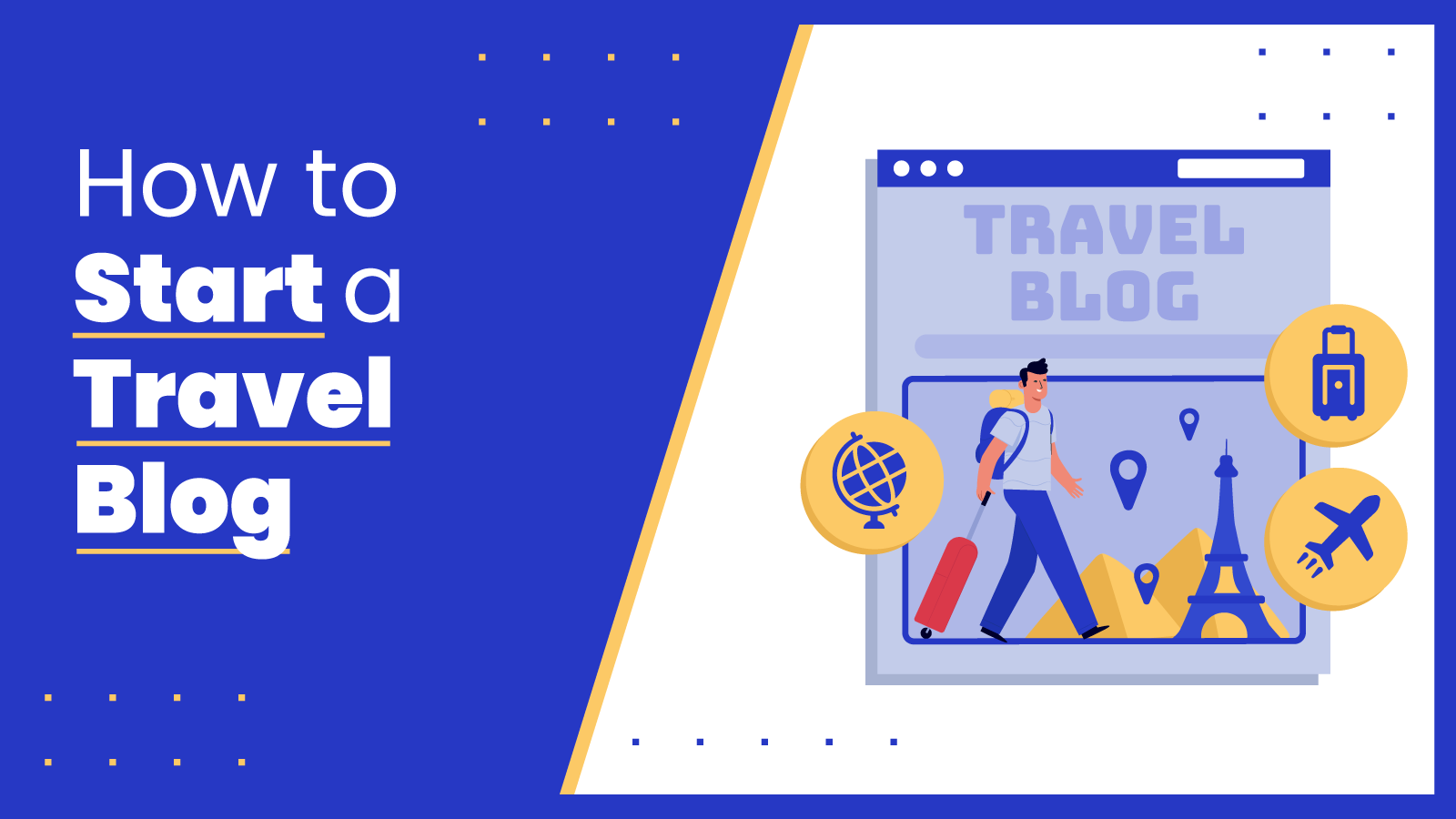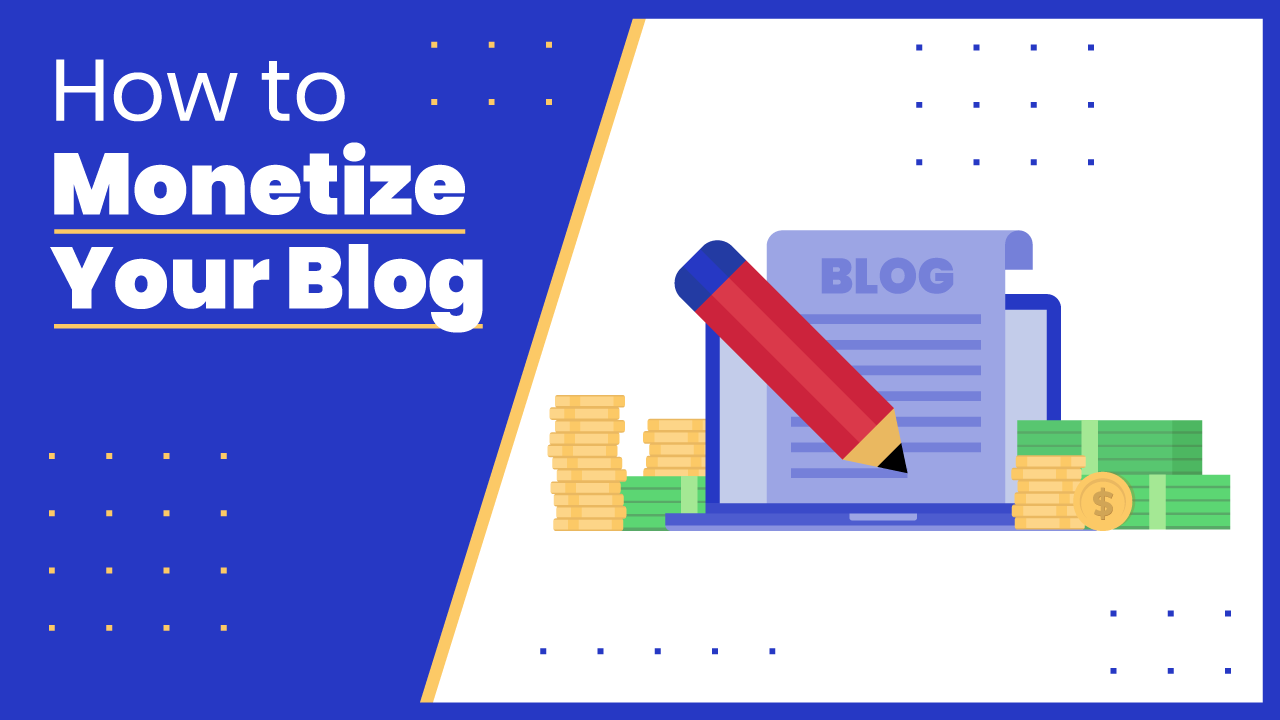If you want to start a blog for affiliate marketing, you’re in the right place.
We’ve built many affiliate blogs in the past 10+ years – and have generated a ton of commissions in the process. Here’s a small sample of our earnings:

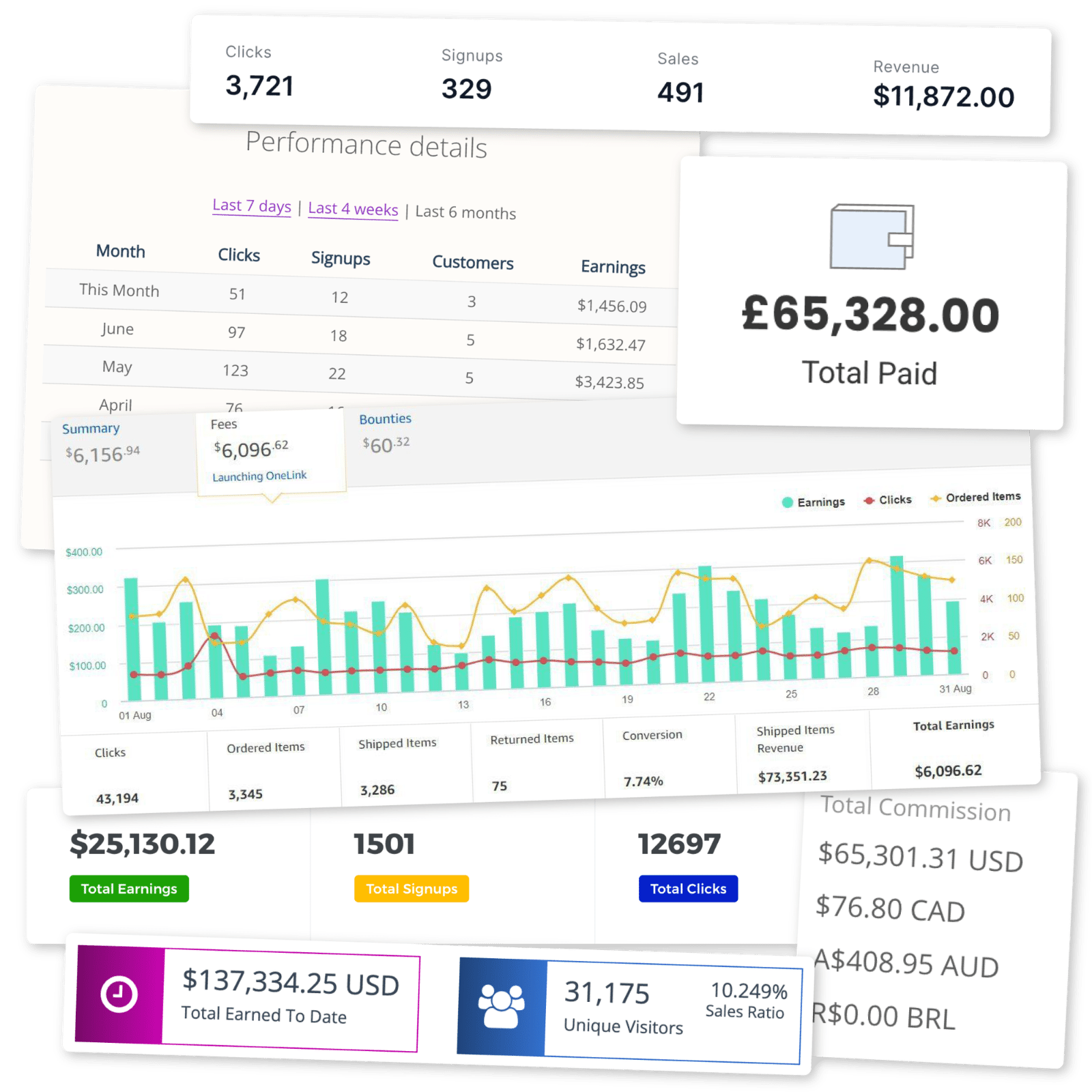
To help you get your successful affiliate blog up and running, we’ve poured our knowledge into this 10-step guide.
What Is Affiliate Blogging
An affiliate blog is a blog that earns money through affiliate marketing.
On an affiliate blog, you’ll create content around a certain topic and promote affiliate offers related to that content. You earn a commission when someone clicks on your affiliate link and makes a purchase.
The great thing about affiliate blogging is that you can write about any topic that interests you. As long as people are searching for information about your niche – and there are affiliate programs to promote – you’re in business!
👉 See also: How To Become an Affiliate Marketer? A Beginner’s Guide
Why Start a Blog for Affiliate Marketing
There are many reasons you should start a blog for affiliate marketing.
The first is money. Our affiliate marketing statistics show that successful affiliate marketers earn an average of over $8,000 per month. You can run your blog from anywhere, giving you the freedom to earn a location-independent, passive income.
An affiliate blog also allows you to immerse yourself in a topic you love: cooking, fitness, travel, or anything else. You can explore your interests and share your knowledge with others.
You can also build a community. An affiliate blog is the perfect vehicle to connect with other bloggers and readers interested in the same topics.
Examples of Successful Affiliate Blogs
Here are three affiliate blogs pulling in readers and making money from their content.
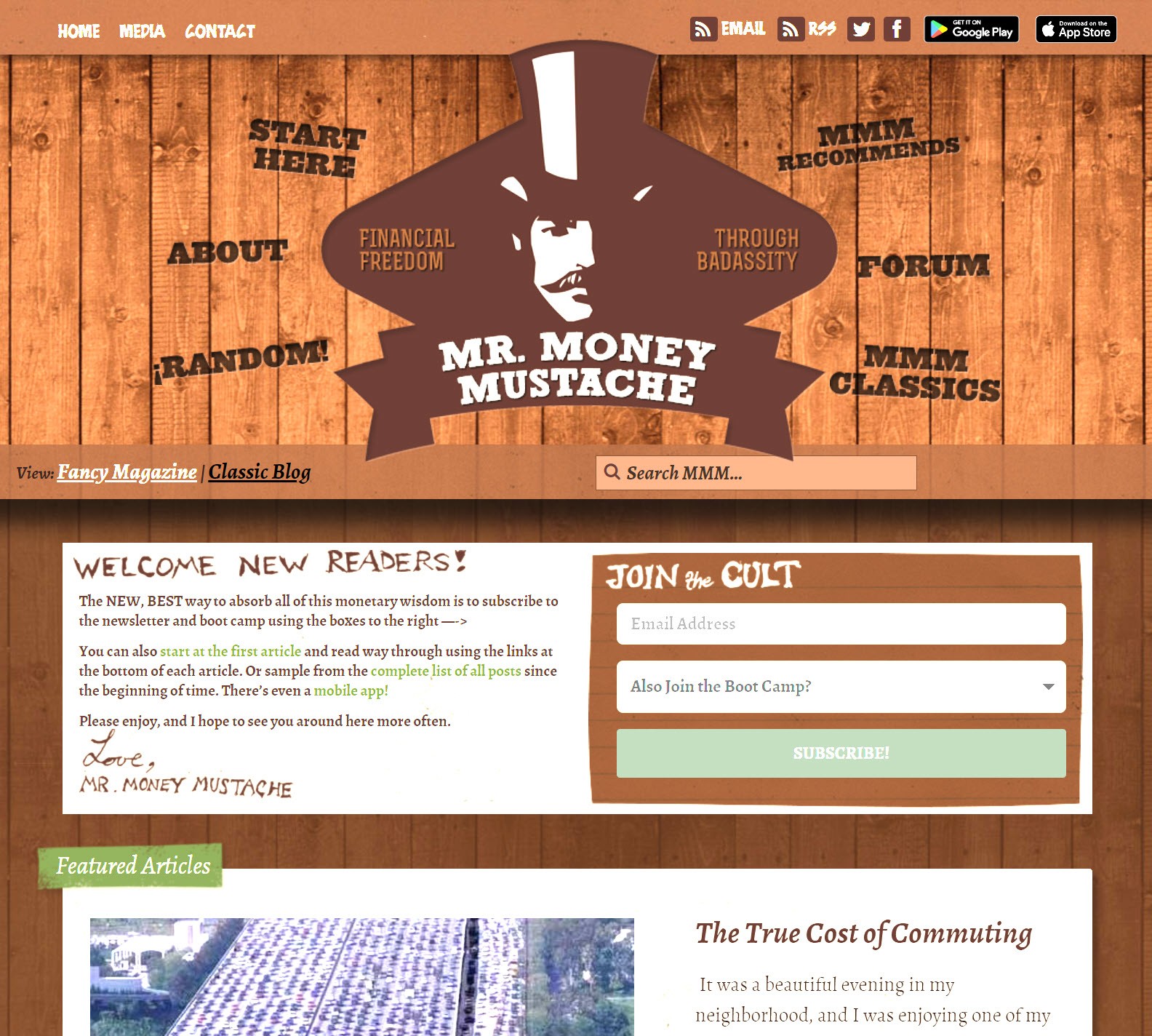
Mr. Money Mustache
Mr. Money Mustache is a popular personal finance blog run by a 30-something retiree. He’s used his expertise and passion for finance to build a strong following. He monetizes his content with affiliate offers and by selling digital products.

Fit Men Cook
Fit Men Cook began as a personal journal for Kevin Curry to tell his weight loss story, but it has grown over several years to cover several aspects of fitness. He makes money through affiliate offers and selling books and courses.
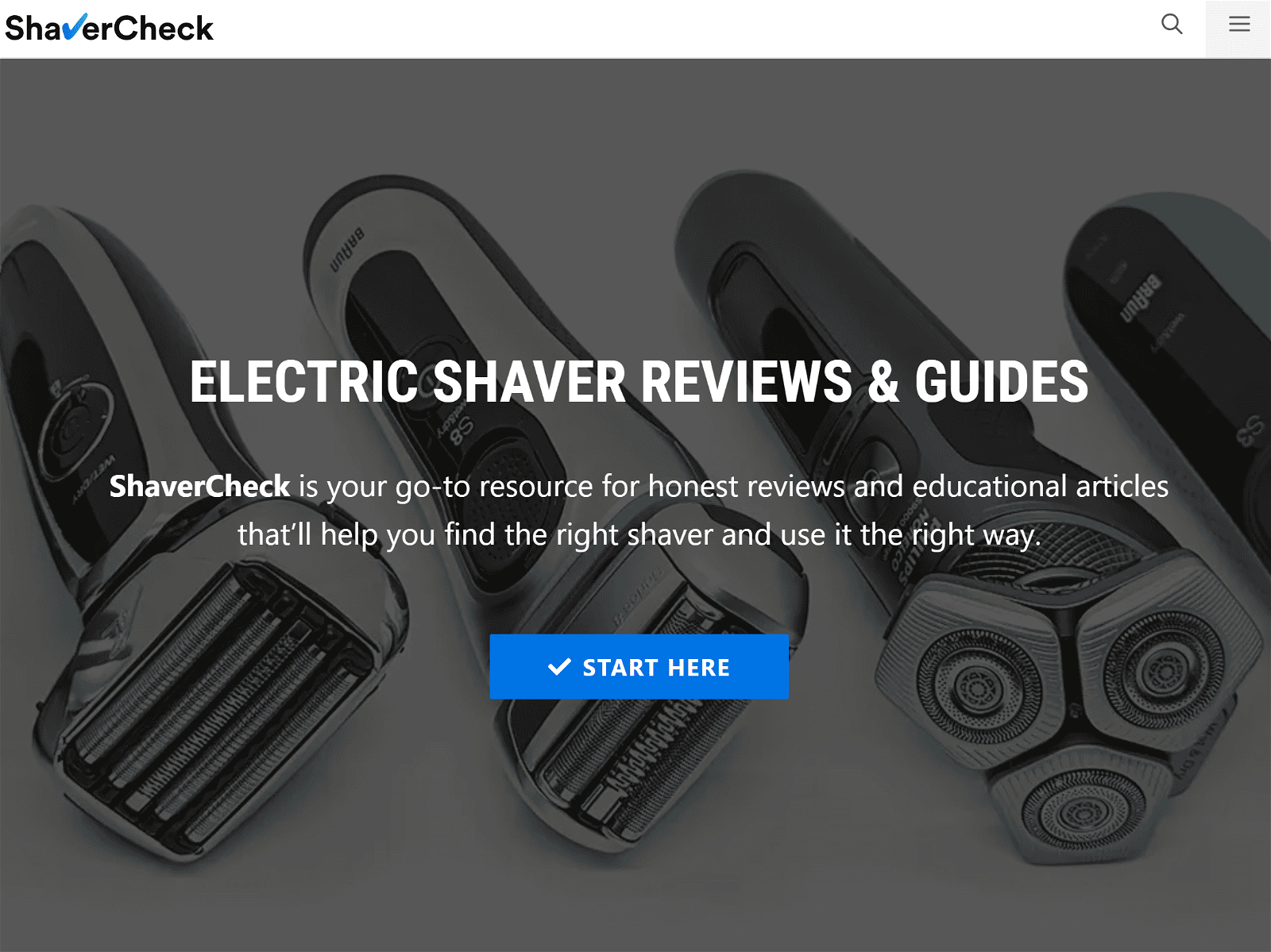
ShaverCheck
ShaverCheck writes comprehensive, experience-based reviews of electric shavers and shaving accessories.
How To Start an Affiliate Blog in 11 Steps
Here’s our in-depth guide to starting your own affiliate blog.
1 Narrow Down Your Niche
The first thing you need to do when starting an affiliate blog is to pick a niche.
Here are some characteristics to look for when deciding on a good affiliate niche:
- Evergreen: You should look for a niche with a long history of people searching for information about it. Topics with steady or growing search volume give you the best chance of building long-term success.
- High-paying affiliate programs: Since you’ll monetize your blog with affiliate marketing, you should look for niches with multiple high-paying affiliate programs to promote.
👉 See our guide to high-paying affiliate programs for some great examples. - You have interest or experience in the niche: You will be creating a lot of content for your blog, so it’s important that you stay interested to follow through over the long haul. That’s much easier if you have a genuine interest or experience in your niche.
For inspiration, check out our list of the best niches for affiliate marketing. You can also browse our other blog articles for tailored advice about specific niches.
Once you’ve decided on a broad niche – fitness is a good example – you must narrow your focus further.
That’s because readers expect content focused on their specific interests. Think about it – if you wanted bodybuilding advice, which blog would you rather read?
- A blog that only writes about bodybuilding
- A blog that writes about all kinds of fitness topics
The first option is what most people prefer.
Picking a sub-niche also makes it easier to build a core audience, as you can focus all content on their needs.
To pick a good sub-niche, start by considering the topics you’re interested in, then investigate.
Sticking with the fitness niche, here are some sub-niches you might consider for your affiliate blog:
- Bodybuilding: Reviews of bodybuilding supplements and training gear, plus informational articles about diet and workouts.
- Fat loss: Diet and exercise advice, along with reviews of supplements, books, and other related products.
- Hot yoga: Guides to performing yoga, how to set up a workout area, etc. Reviews of books, mats, yoga clothes, and similar products.
- Strength training: Program and equipment reviews, guides to picking a gym, and nutrition for strength training.
- Home gym: Guides for building a home gym in the attic, basement, or garage. Equipment reviews.
Passion for your blog niche will keep you interested in your new site, but you must also ensure that your sub-niche is popular enough to build a following and make money.
The best way to do that is to choose a focus area with successful blogs.
Here is our recommended approach for finding sub-niches with a history of affiliate blogging success:
Make a list of successful blogs in each book sub-niche you’re considering. Use a blog aggregator like Detailed or AllTop to find blogs in your sub-niche. You can also search Google for keywords related to your niche or use the “Organic Competitors” tool on Ahrefs to find websites similar to a blog you already know about.
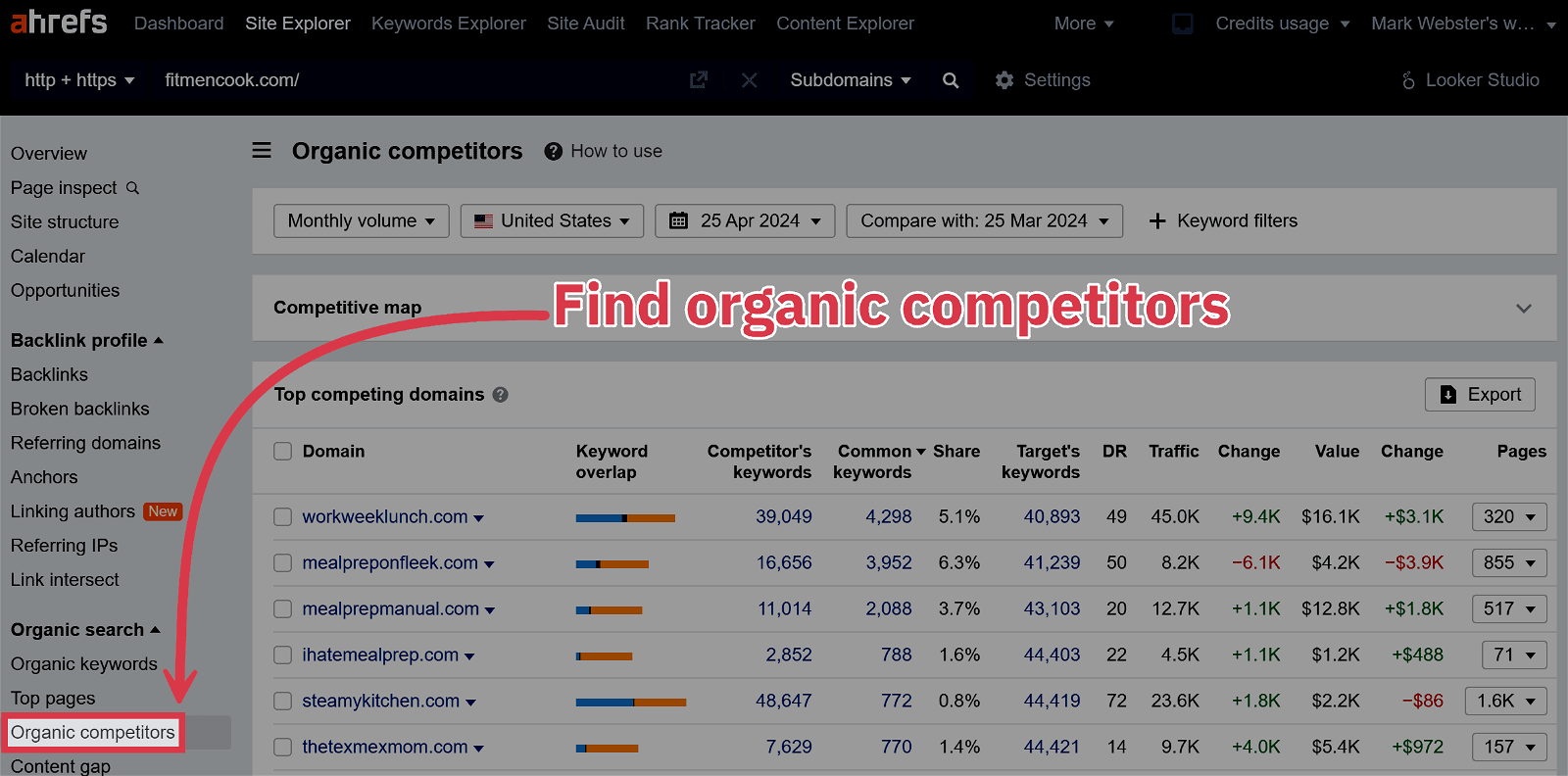
Check traffic levels. High traffic levels are a sign of a successful blog. You can use a free trial of SE Ranking to check how much traffic the blogs on your list are receiving. Just type in the URL and then check out the Competitive Research section.
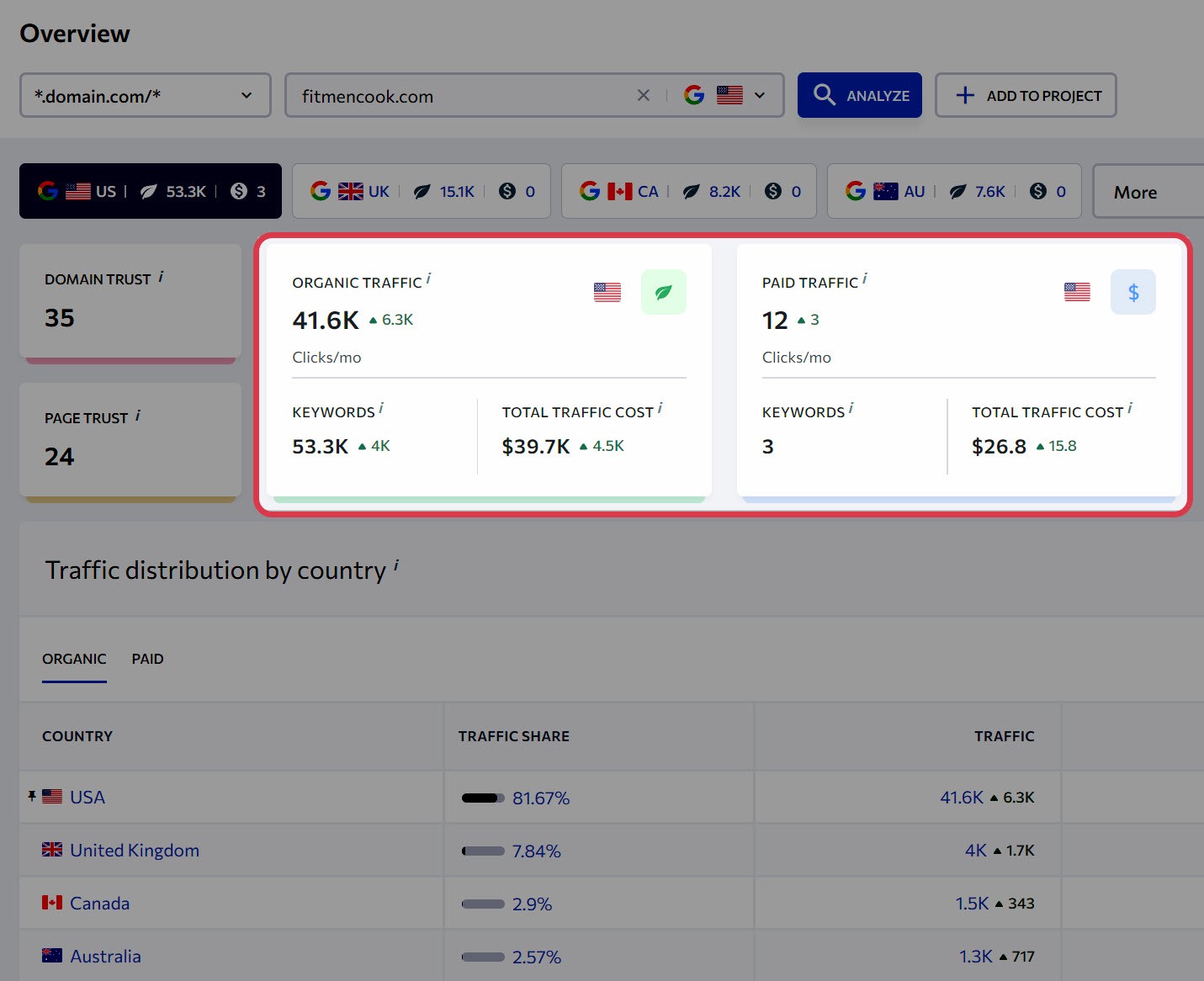
Compare prospective sub-niches with Google Trends. Google Trends can help you compare the relative traffic levels of several potential sub-niches.
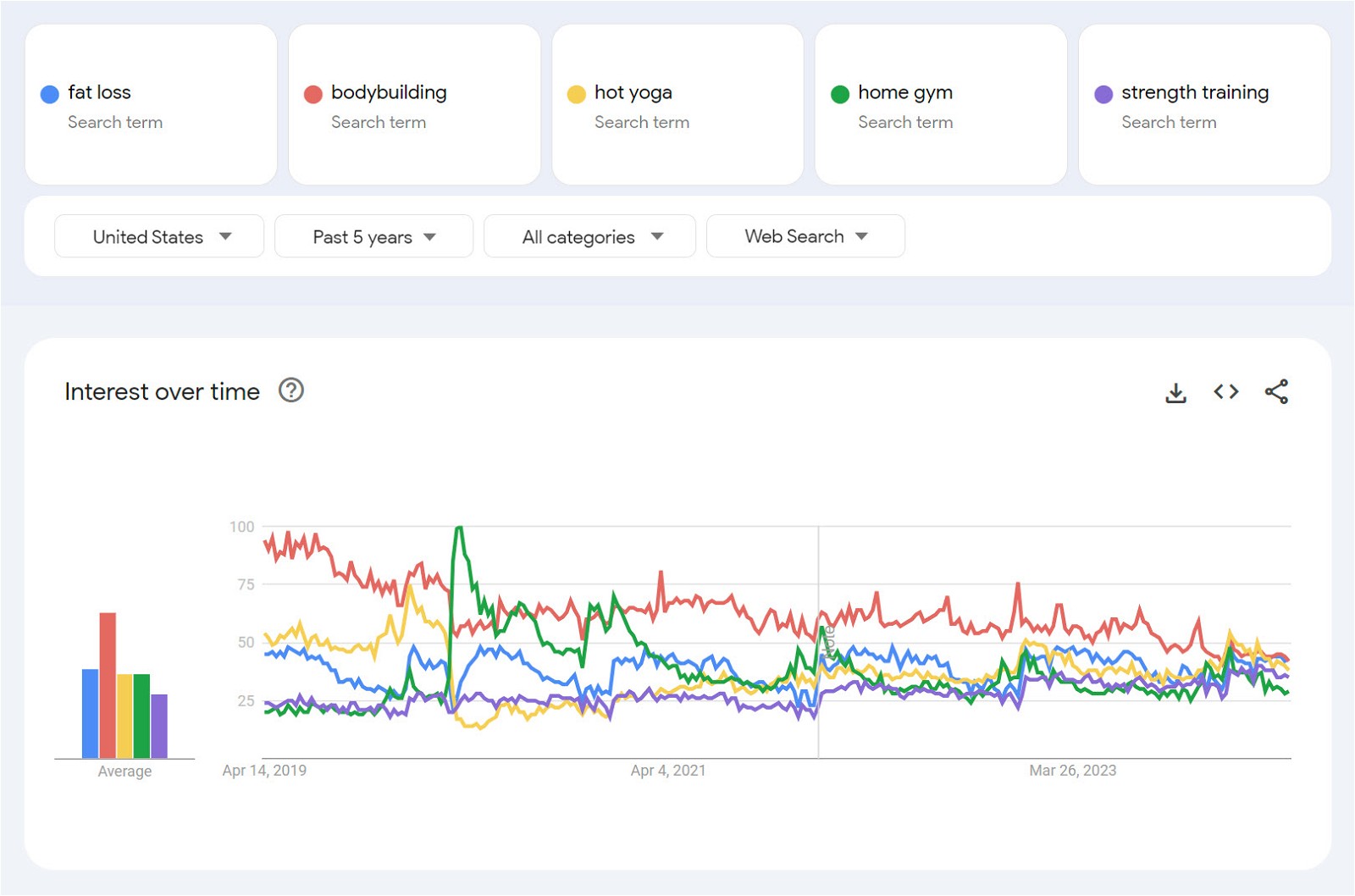
If you’re still not sure which sub-niche you want to focus on at this point, watch our detailed video on selecting a blog niche:
Take a day or two to pick a sub-niche, but don’t get too bogged down on this step. It’s better to make a decision and move on than to over-analyze.
2 Choose a Blogging Platform
Now that you have a niche for your affiliate site, you must pick a platform for your blog.
A blogging platform is a service that hosts your content online and serves your site to visitors
There are a few free social blogging options, like Medium and Blogger. Beginners sometimes choose these platforms because they’re free and easy to use, but they have some serious drawbacks:
- You don’t own your site, so you must comply with the platform’s standards. Some of the content you want to publish might not be supported or even allowed.
- You have limited control over the design and functionality of your site.
- It’s hard to monetize a blog running on a free platform.
For these reasons, building your own website is the best choice for most bloggers. Here are a few of the benefits of a self-hosted blog:
- You control what your blog looks like and what content you publish.
- No one can shut down your blog or your blogging platform.
- A self-hosted blog makes earning money with affiliate products, display ads, and your own products and services much easier.
- You can use social media and SEO to drive traffic to your blog.
- You can build an email list to give you another revenue stream and to help protect your traffic from algorithm changes.
The best self-hosted platform for most blogs is WordPress – specifically WordPress.org (not WordPress.com).

WordPress.org gives you free access to the WordPress platform, and you can customize your blog with thousands of themes and plugins.
WordPress is the best choice in most cases, but there are other options.
👉 See our list of the best blogging platforms for alternatives.
3 Choose Your Domain Name
You’ve picked a niche and decided on WordPress for your platform, so now you must choose a domain name for your new blog.
A domain is the unique web address for your site. It includes the actual name of your site, plus an extension, like .com or .net.

Your domain name should be memorable and related to your niche so readers know what to expect from your content.
Here are some tips for picking a domain name:
- Choose a .com domain. No other extension is as trusted as .com. However, you can use a .com alternative if you have a particularly good name with an unavailable .com.
- Match it to your niche. Your domain name should give readers at least a hint about your niche.
- Keep it broad – Don’t make your domain name so specific that you can’t expand your content down the road. For example, you might start reviewing yoga pants, but your domain name should be broad enough to add content about other aspects of yoga later on.
- Keep it short. Short domain names are easier to remember and type, so you should keep your name to three words or less.
- Make sure it’s not trademarked. Once you have a domain name you think will work for your blog, do a trademark search to ensure no one else owns the name.
If you need help finding a good domain name that’s still available, you can use an AI domain generator like Brandsnap to help.
Once you pick a domain name, you need to buy it. We recommend Namecheap – it does everything you need for ~$10 annually.
4 Buy Web Hosting
It’s time to set up web hosting for your new affiliate blog.
A web host is a service that provides the infrastructure to store, manage, and serve your site to users.
Inexpensive options like Bluehost are popular with beginning bloggers, but SiteGround is our recommended host for most bloggers. It provides superior speed, reliability, and support.
Here is a quick step-by-step guide to setting up hosting on SiteGround:
Step 1: Go to Siteground’s WordPress hosting page.
Step 2: Choose the StartUp plan. It’s the least expensive and perfect for a new blog. Note that the price does increase after the first year.
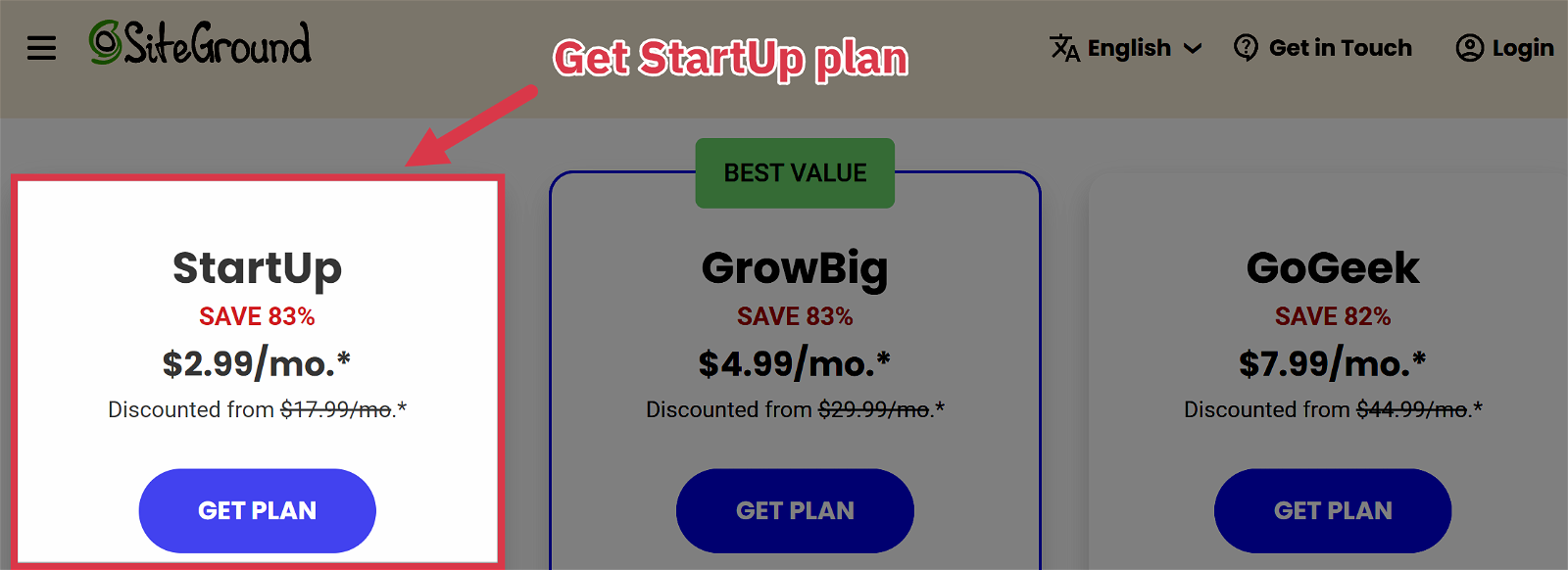
Step 3: Select “Existing Domain” and enter your domain name:

Step 4: Fill in your account and location details:

Step 5: Add payment info and choose the subscription length. The best deal is usually the 12-month option.

Step 6: You don’t need extra services for a new blog, so skip them for now.
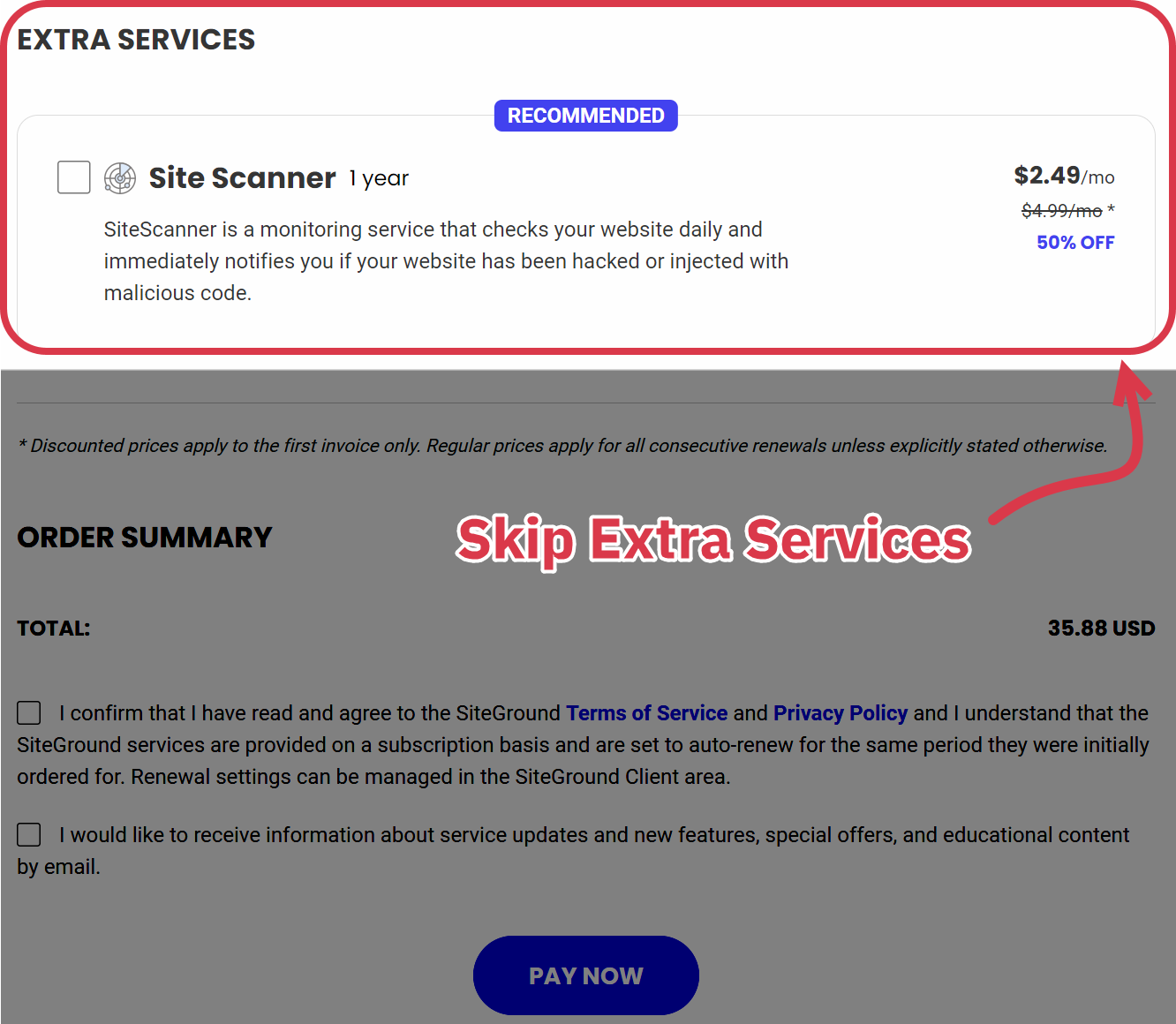
Step 7: Point your domain to SiteGround. If you bought your domain from a registrar like Namecheap, you need to change the DNS settings to point to SiteGround. You can use this DIY guide or ask SiteGround support for help with this.
And you’re done! Your hosting is set up — now it’s time to start building your blog.
5 Choose a Theme for Your Affiliate Blog
With web hosting in place, you can move on to choosing a WordPress theme.
A blog theme provides the visual framework your visitors see when they land on your site. As much as possible, match it to your niche and brand to help you make a strong connection with your readers.
For example, yoga blogs often feature soft color schemes with lots of white space and clean, legible text. They also showcase big, rich images.
As with your platform, you can pick a free WordPress theme or pay for a theme with more features.
While it’s OK to use a free theme when starting, ensure it also has the option to upgrade later. Most free themes have limitations that will slow you down as your affiliate blog takes off.
Here are our 3 favorite “freemium” themes that have a paid upgrade option:

Comes with lots of templates to help you design your site, and it’s super fast.
Get Astra
Flexible and lightweight. It’s also easy to customize, even if you can’t code.
Get KadenceOnce you’ve chosen your theme, you need to install it. Here’s how:
Step 1: Go to your WordPress dashboard.
Step 2: Go to the left sidebar and select Appearance > Themes.
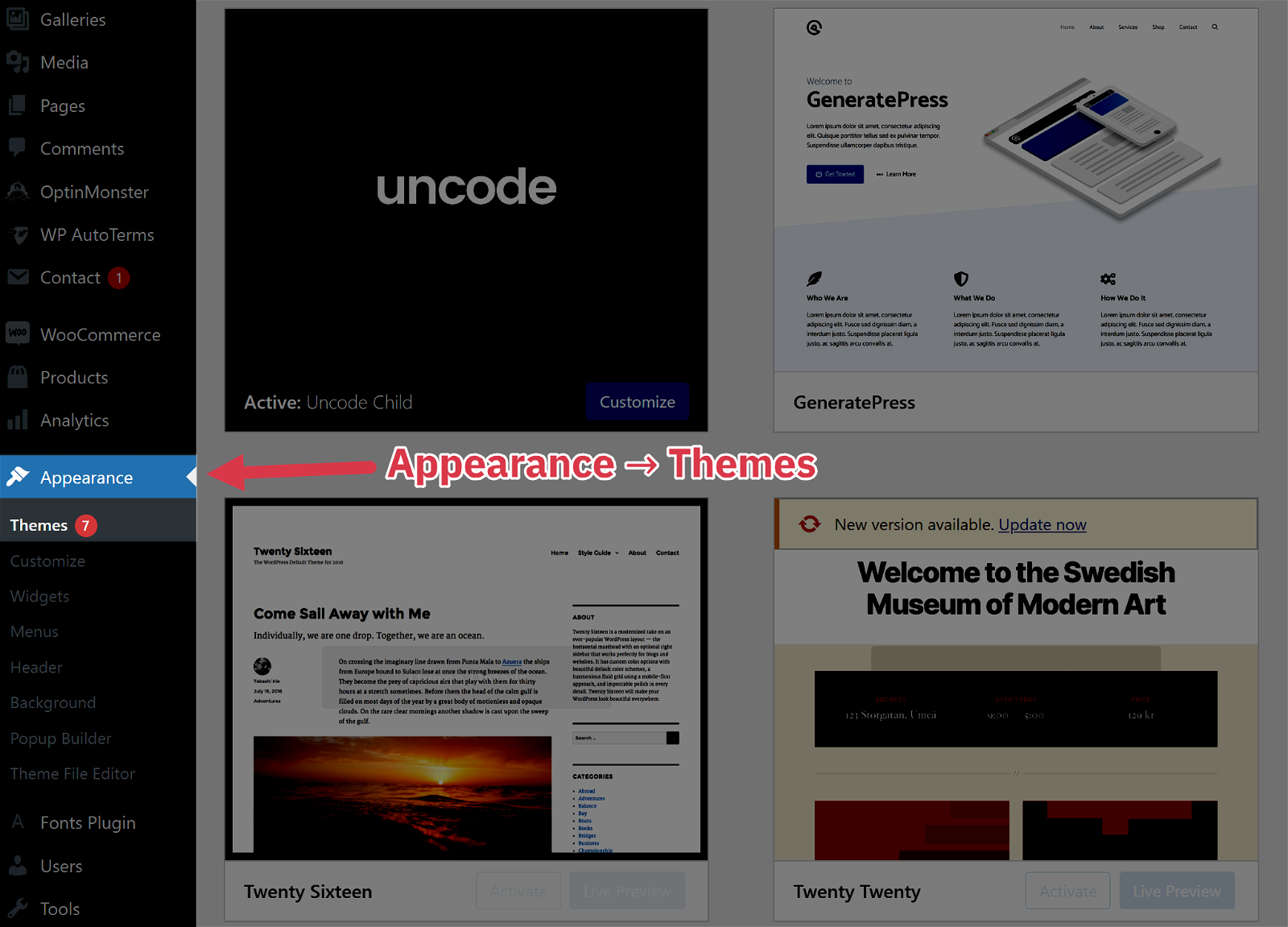
Step 3: Click “Add New”
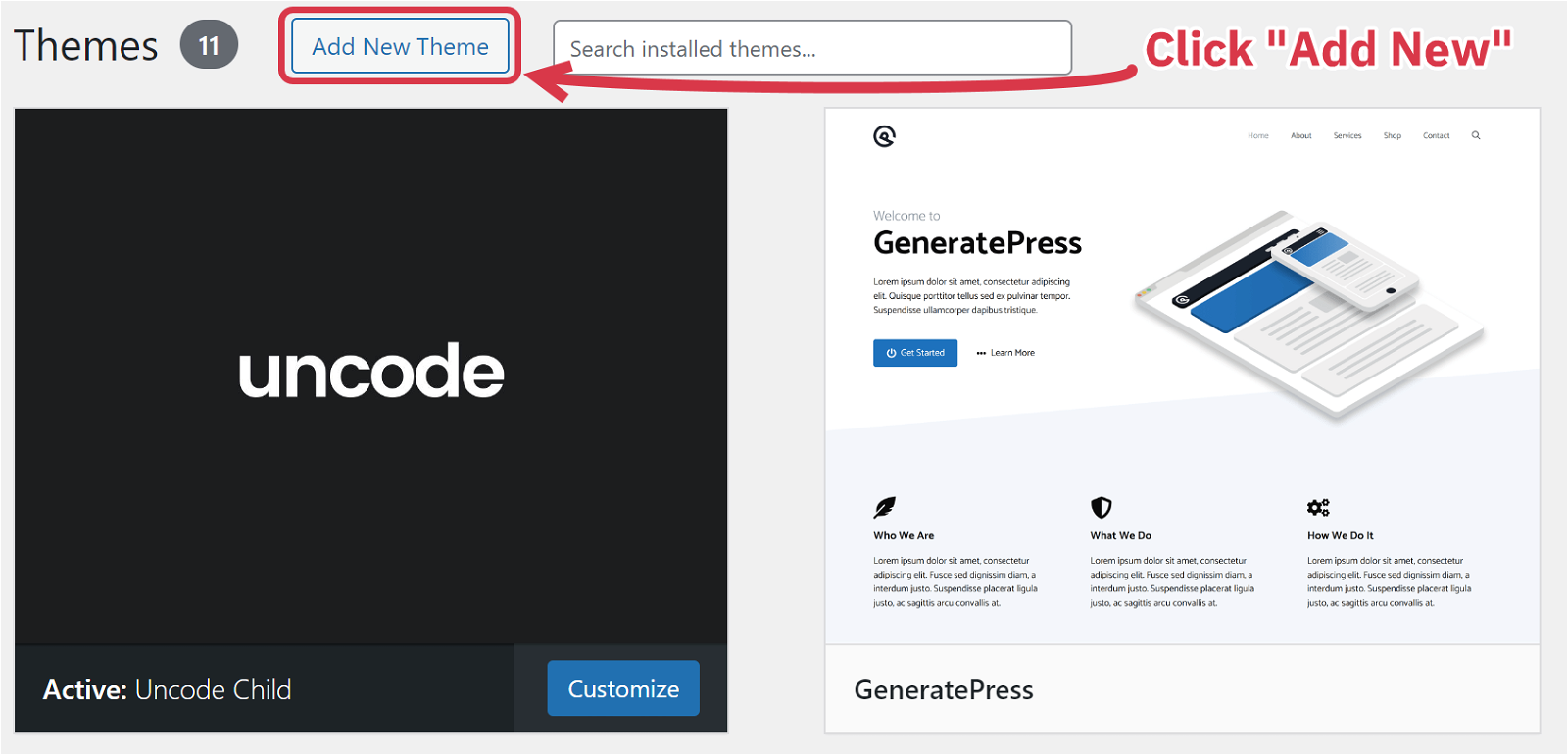
Step 4: Upload your theme file and click Install.
Step 5: Activate your theme.
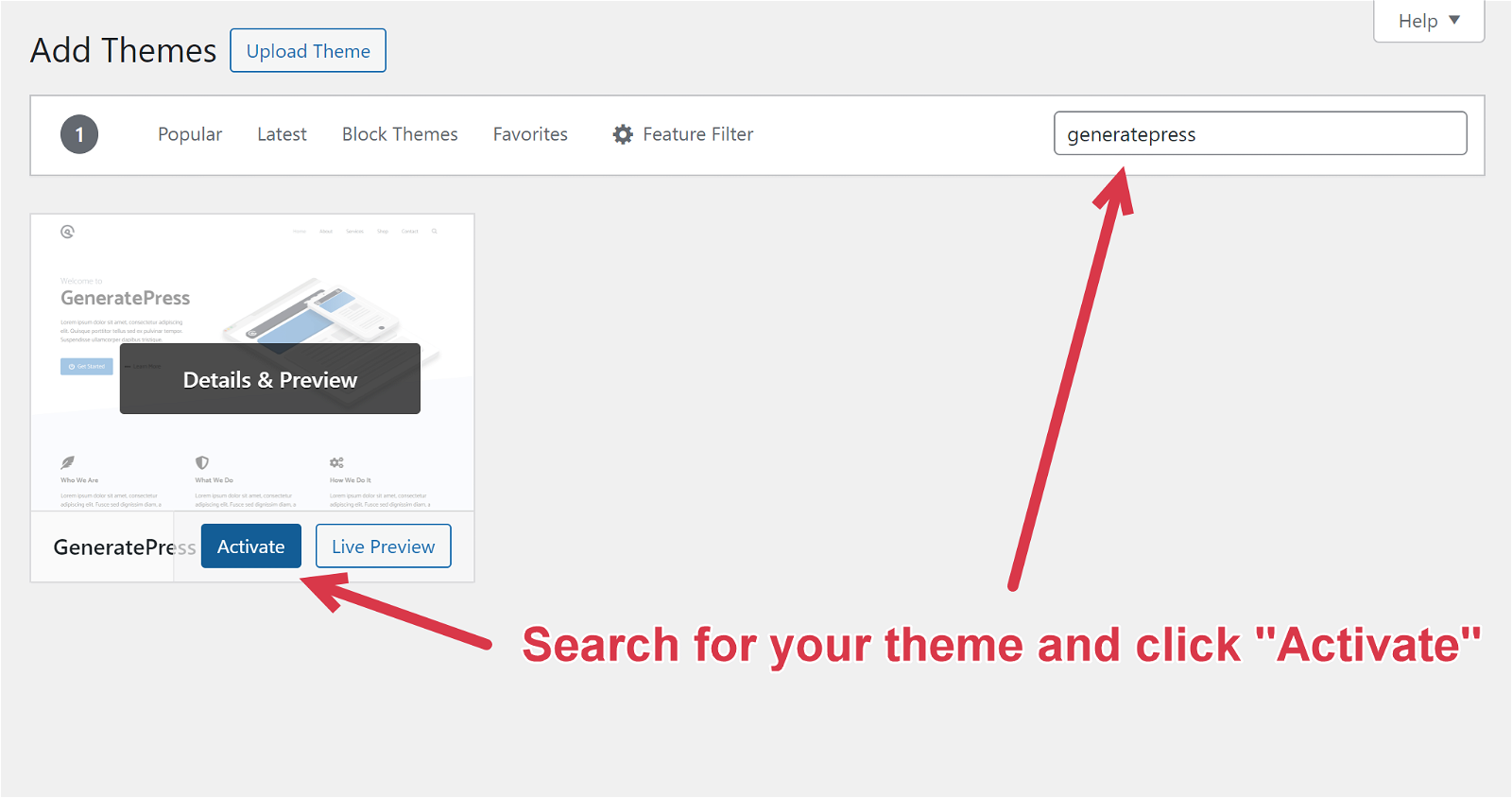
That’s all there is to it! Now you have your WordPress theme and can start customizing your site.
6 Decide on Design & Branding
The WordPress theme you choose gives your blog a basic layout and design, but you should also fine-tune your site to match your brand and niche.
The first step is to pick a color palette — the set of colors you will use on your site. This choice will impact every aspect of your blog’s design, so take time to get it right.
Luckily, you don’t have to be a design expert to make the right choices here. Instead, you can use Coolors to create a color palette that fits your niche and looks great.
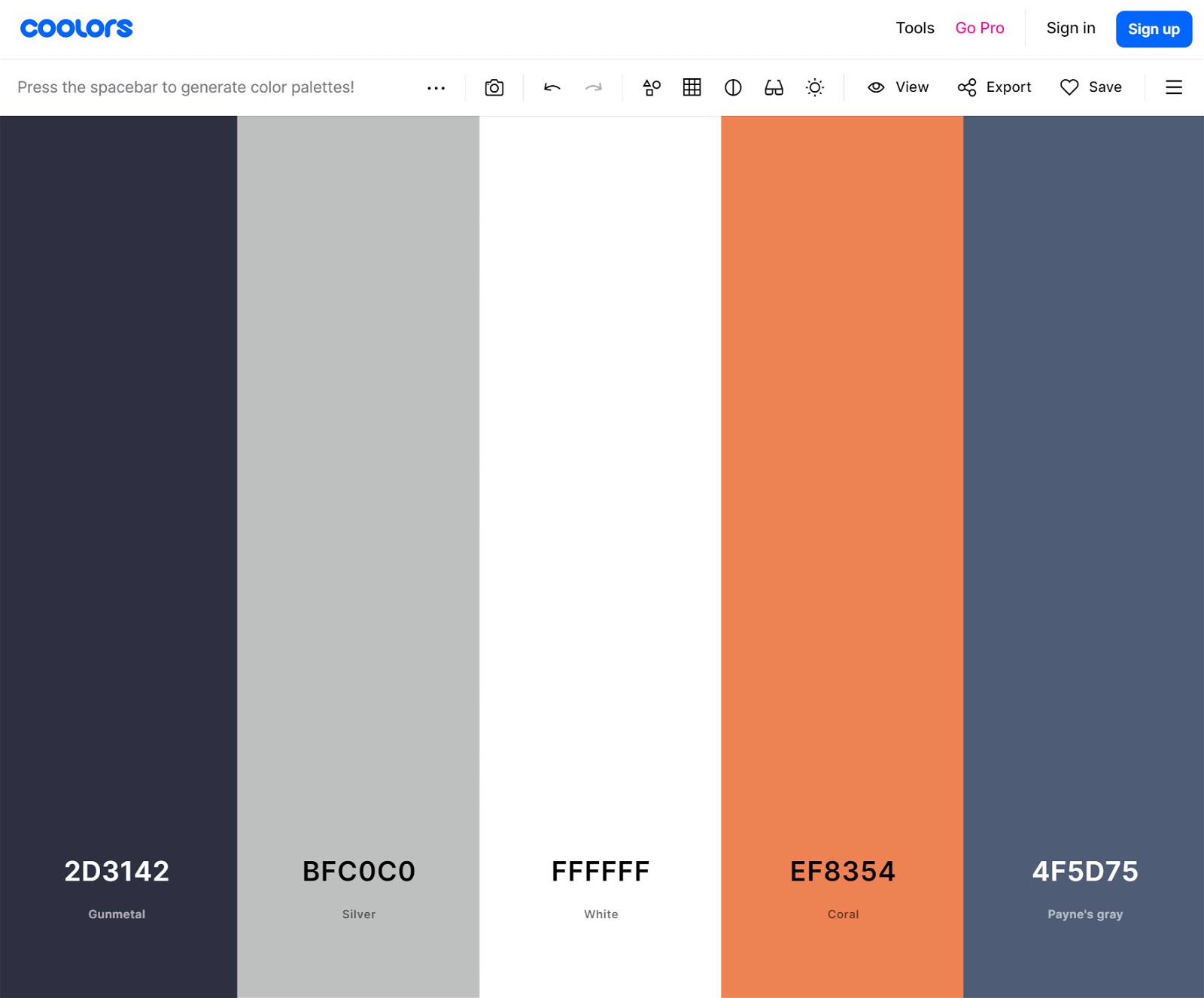
Once you pick a set of colors, you can design your site’s logo. This is another critical part of your brand identity because it’s one of the first things readers see when they land on your site.
Like your colors, your logo should match your niche and the tone you’re trying to set with your blog. For example, many yoga blogs have round logos that feature the silhouette of a person stretching.
But here again, you don’t need any design experience to create a great logo. We recommend using a Canva logo template and customizing it to fit your blog.
Here are some examples of Canva templates for yoga blog logos:

7 Create Essential Pages
Alright! Your blog has the building blocks of a strong brand identity, so now it’s time to add the pages that every blog needs.
All of these are essential, so don’t skip any!
Homepage
This is the “front page” page of your blog, and it should immediately let visitors know what your site is about. Use links, menus, and other navigation elements to help readers find what they want.
About Page
Your About page is your chance to show your audience who you are and why they should listen to you. Talk about your background in your niche and explain why you started the blog and where you plan to take it.
👉 See our list of awesome About page examples if you need some inspiration.
Contact Page
Tell your readers how to get in touch with you. Include a contact form, email address, and any social media accounts associated with your brand.
Privacy Policy + Terms and Conditions
These legal pages tell your readers about the information you collect and how they can use your site. Your site needs both pages, and you can generate them for free at PrivacyPolicies.com.
Creating new pages in WordPress is easy. Log in to your dashboard, click the “Pages” menu, and choose “Add New.”
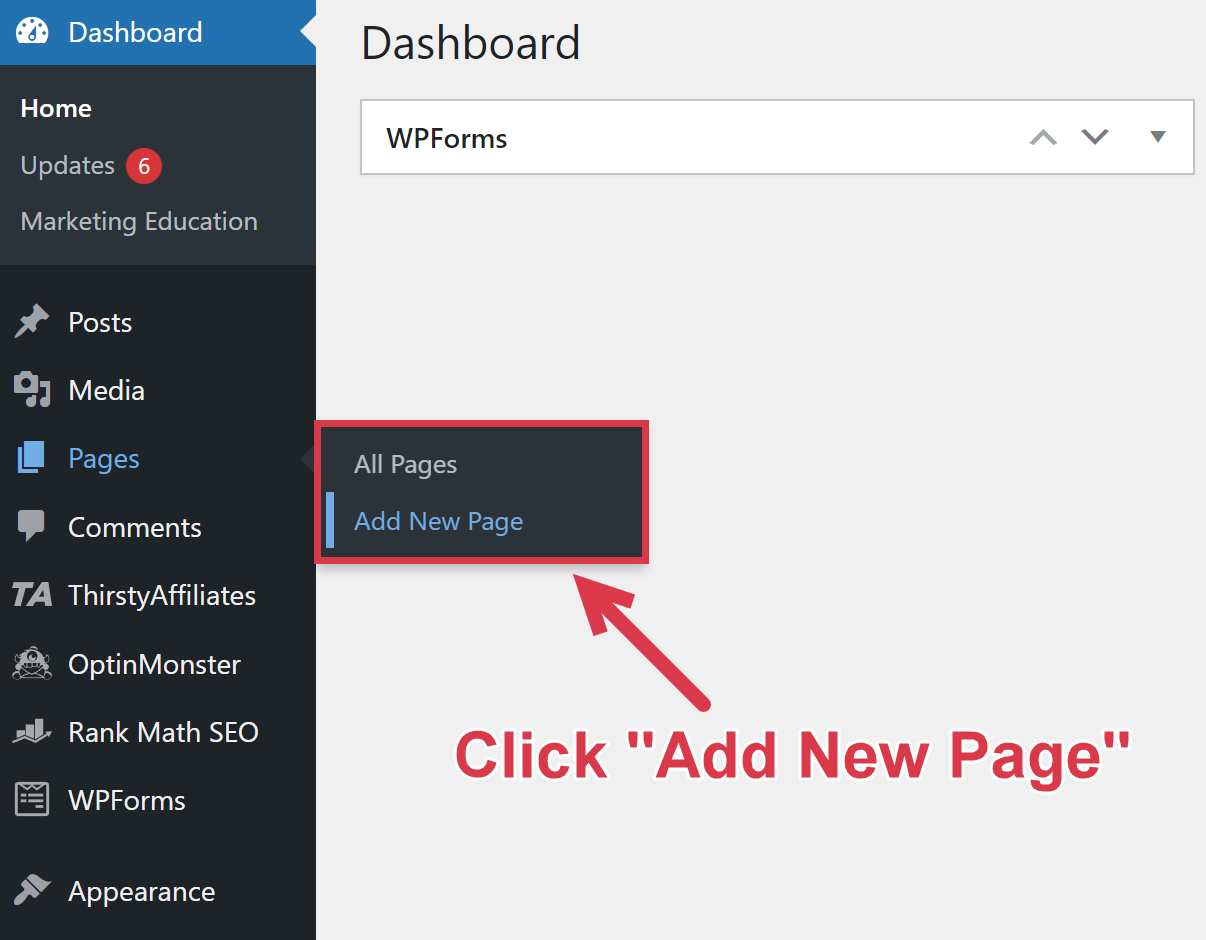
8 Join Relevant and Reputable Affiliate Programs
Affiliate revenue will be the primary income stream for your new blog, so it’s important to join reputable affiliate programs relevant to your niche. That will give you the best chance of finding offers to help your audience and boost your bottom line.
Here are some things to look for in a good affiliate program:
- Products that are relevant to your audience. You should only review and promote products and services your audience is interested in.
👉 See more: Best Products for Affiliate Marketing - High commission rate. The higher the commission rate a program pays you, the fewer conversions you need to make good money.
- Long cookie duration. The cookie duration determines how long you can make commissions after someone clicks your affiliate link. The longer the cookie duration, the better.
- High conversion rate. Look for programs that consistently deliver a high conversion rate, which measures the percentage of your readers who click an affiliate link and buy something. Industry-average conversion rates run around 0.5% to 1%, but you should look for products that convert higher than that.
- High product quality. You want to build a long-lasting relationship with your readers, so you should only recommend great products and services. Look for affiliate programs that feature products with strong ratings.
- Good customer support. Make sure the affiliate programs you pick have good customer support to help you get set up and to help with any issues that might pop up down the road.
Affiliate marketing will be the bread-and-butter revenue source for your new blog, so do some research and pick the best programs for your new site. Your audience and your blog will love you for it!
👉 See also: Best Affiliate Programs for Beginners in 2024
9 Start Creating Content
Whew! You’ve done a lot of work to set up your blog, but now you finally get to start creating content about the niche you love.
It’s an exciting moment, but don’t just jump in and start writing about the first topic that comes to mind.
That might sound fun, but it’s not the smartest approach to your content.
Instead, I recommend adopting a keyword-focused content strategy to drive traffic to your blog. That means writing posts about keywords people search for on Google and other search engines.
You should create a nice mix of commercial and informational content for your affiliate marketing blog.
Commercial content includes product reviews, product roundups, and product comparisons. Informational content, on the other hand, doesn’t explicitly promote offers but instead helps readers learn more about your niche.
However, you should still include contextual affiliate links in your informational content. Just make sure the products you link to are directly related to your posts.
Look for keywords related to your niche with a decent monthly search volume but not much competition.
Ahrefs can help you with this keyword research. Just type a “seed keyword” into the Keyword Explorer, and Ahrefs returns a list of relevant related search terms along with their estimated search volumes. Look for keywords with volume above 150 and keyword difficulty of less than 25.
For example, here are some of the related terms that Ahrefs returns for the seed keyword “hot yoga”:
| Keyword | Search Volume | Keyword Difficulty |
|---|---|---|
| How hot is hot yoga | 1100 | 20 |
| calories burned in hot yoga | 700 | 15 |
| hot yoga classes | 300 | 12 |
| best hot yoga mats | 200 | 14 |
| hot yoga for beginners | 150 | 8 |
Use these keywords to come up with some blog post titles. Here are a few examples:
- “10 Best Hot Yoga Mats for Beginners”
- “5 Reasons Why Calories Burned in Hot Yoga Don’t Stop in the Gym”
- “7 Best Online Hot Yoga Classes When You’re in a Hurry”
Once you make 10 post titles, it’s time to write.
Here are some tips for creating top-notch affiliate blog posts:
- Understand search intent. Ensure you know what your audience wants to discover when they search for your target term, and then write your content to answer their questions.
- Consider your audience. Write with your audience in mind and use language that makes sense to them. For example, people interested in hot yoga don’t want a formal essay, but they expect you to use the yoga-related lingo correctly.
- Stay on topic. Don’t stray too far away from the keyword that your content is targeting. Instead, stay focused on satisfying the reader’s intent without adding fluff.
- Share personal stories. Readers want to know that you’re a real person with experience that can help them. Share personal stories that show you know what you’re talking about and help them relate to you.
- Link to other posts on your blog. Make sure to link to other relevant posts on your blog. That helps your readers learn more about your niche and can also help with SEO.
- Buy the products you review. It’s hard to write an authentic review if you’ve never used a product, so buying and using whatever you’re reviewing is always best.
- Take photos/videos of you using the product and add them to your post. Buying the products you review also allows you to include first-hand images in your posts. Using images to illustrate your words helps you connect with your audience and drive home your points.
- Look for niche-specific information hubs to find further inspiration. Most niches have online communities that are rich sources of information and inspiration. YouTube, Instagram, and TikTok are hotbeds for yoga, for example.
In addition to these tips, the FTC requires you to tell readers that your content contains affiliate links. Ensure you include an affiliate disclosure at the top of each blog post.
You can read more details about satisfying this requirement in our post about affiliate disclosures.
The ultimate success of your affiliate blog depends on the quality of your content and how well you satisfy user search intent. Focus on answering your audience’s questions as thoroughly as possible with each post you publish.
10 Promote Your Affiliate Blog
Writing great content is vital to the success of your blog, but your posts won’t show up in Google search results right away. You should promote each post online to start getting traffic in the meantime.
Here are some tips for promoting your blog and helping readers find your content:
- Share posts in online communities and on social media: Almost every niche has a strong online community across various social media platforms. Figure out where your readers hang out and share your content with them there.
- Email list: Offer your readers a freebie related to your niche in exchange for their email address. Then send them an email update when you publish new content.
- Optimize your website for SEO: Target search intent and answer your readers’ questions with each post. It’s one of the best long-term strategies for building traffic since Google and other search engines can send new readers to your posts for months or even years.
- Collaborate with other bloggers in your niche. Work with other bloggers to promote each other’s content to your existing audience. This approach works well with complementary niches. For example, a yoga blogger might collaborate with a meditation blogger.
- Look for local promotion opportunities. Try to find a way to promote your blog offline, in your local community. For example, you might start a niche-specific club, write a guest column for the local newspaper, or set up at local fairs and hand out information about your niche.
However, you approach promotion, make sure it’s genuine. Spamming links to your blog won’t help you build a devoted audience.
11 Monetize Your Affiliate Blog
You’ve posted the first content to your affiliate blog and decided on a promotional strategy. Now it’s time to get paid for your work by monetizing your blog.
Since the primary monetization strategy for your new blog is affiliate marketing, you must ensure you promote your affiliate links in as many places as possible.
Here are some tips to make your affiliate offers as visible as possible:
Add affiliate links to your posts. Make sure to include affiliate links for each product you review or include in a roundup, and look for places to include your affiliate links, even in informational posts, naturally. For example, if you’re writing about a specific yoga technique, you can link to a book or course that teaches more about the same topic.
Add product feature boxes to your posts. Make the products and services you’re reviewing stand out by including product feature boxes in your posts. You can do this with GenerateBlocks, which lets you easily create eye-catching product summaries and include affiliate links.
Create banner display ads for your links. Draw attention to your affiliate links by creating banner display ads for the offers you’re promoting. Most affiliate programs provide ready-made banners you can use, so you won’t need to design them yourself.
Create a Resource page. Gather all of the products and services you recommend onto a single page. It’s convenient for your readers because they can find everything they need all in one spot, giving you another place to include your affiliate links. Check out our list of the best online marketing tools as an example.
Even though you’re building an affiliate blog, you should also take advantage of other monetization strategies:
Display Ads
Ads are automatically served to your readers through an ad network or direct sponsorships.
Why It’s Great: You’ll get paid whenever someone views or clicks on an ad. Unlike affiliate offers, you don’t have to actively do any promotion since the ad network does all the work for you.
Get Started: Beginners can sign up for Ezoic to get ads on their site immediately. Once you have more traffic, you can join a higher-paying network like Mediavine (minimum 50,000 monthly sessions) or Raptive (minimum 100,000 monthly sessions). Direct sponsorships are another option and offer more control and potential profit.
Sell Your Own Products
Create digital or physical products and sell them directly to your readers.
Why It’s Great: You can create products you know your audience will love, and you get to keep all the profits instead of just earning a small commission.
Get Started: First, identify your audience’s problems and determine how to solve them. For a yoga blog, that could mean writing an ebook about setting up a home yoga studio or producing a short video course illustrating various workouts. You can also make your own version of your top-performing affiliate offers.
Summing Up
You’ve learned the fundamental steps to launch your affiliate marketing blog and start earning passive income.
However, there’s still a wealth of knowledge to uncover that can supercharge your success.
Blogging and affiliate marketing have steep learning curves, and I couldn’t include all the necessary information in this blog post.
That’s why we’ve created a free training that reveals the most effective secrets and tactics we’ve discovered over a decade of profitable blogging.
This training is designed to give you a significant advantage. On average, bloggers who implement these techniques are 83% more successful than those who don’t.
If you’re serious about maximizing your affiliate income, you won’t want to miss out on this valuable resource.
FAQ
Are Blogs Good For Affiliate Marketing?
Blogs are great platforms for affiliate marketing because they allow you to connect directly with an audience who’s already interested in your niche and looking for information. Blogs with solid SEO also draw a steady stream of traffic from search engines.
How Do Affiliate Blogs Make Money?
Affiliate blogs make money by promoting affiliate offers for products and services related to their niche.
By publishing commercial-intent content like reviews, buying guides, and product comparisons, along with informational content that includes contextual affiliate links, blogs have plenty of opportunities to promote affiliate offers.
Besides their affiliate marketing efforts, blogs also make money through advertising and selling their own products.


